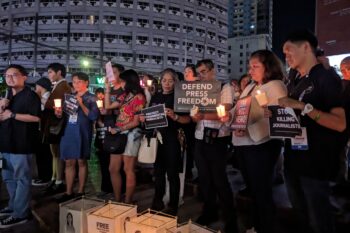DAVAO CITY(MindaNews/ 14 September)—The Department of Social Welfare and Development (DSWD) has identified this city and 10 other municipalities as priority areas in Region 11 for the implementation of its new poverty reduction convergence strategy dubbed “Tatsulo DSWD Convergence Program.”
These municipalities are Laak in Compostela Valley, Talaingod in Davao del Norte, Sarangani, Sta. Maria, Malita, Don Marcelino and Jose Abad Santos in Davao del Sur, and Caraga, Manay and Taragona in Davao Oriental.
The Tatsulo program is a new framework that integrates DSWD’s three big programs namely the Sustainable Livelihood Program that began in 1981, the Kapit-bisig Laban sa Kahirapan-Comprehensive and Integrated Delivery of Social Services (Kalahi-CIDSS) in 2003, and the Pantawid Pamilyang Pilipino Program (4Ps) in 2009.
Tatsulo was adopted in the middle of last year, Merlinda A. Paragamac, head of DSWD-11 convergence team, said last Tuesday during a two-day orientation for public information officers and media practitioners here.
Estrella Brigole, DSWD-11 head of institutional development, said that Social Welfare Secretary Corazon “Dinky” Soliman has realized that 4Ps alone cannot uplift the lives of the beneficiaries, hence the decision to integrate the three programs.
The 4Ps, which provides conditional cash transfer to promote the health and education of poor households, particularly of children aged 0-14 years old, is only for the beneficiaries’ basic consumption, Brigole said.
They need sustainable livelihood, and in certain areas, some communities need infrastructures such as school buildings, health centers, and farm-to-market roads, among others, which are addressed by the Kalahi-CIDSS, she added.
Paragamac presented that in the region, a total of 43,238 households, mostly 4Ps beneficiaries, are target for the convergence program based on the social welfare indicator profile.
Of the total households, 26,224 households or 55.85 percent belong to level 1 or the survival stage, 17,005 or 42 percent belong to level 2 or subsistence stage, and nine or 0.02 percent are in level 3 or self-sufficient stage.
Under the sustainable livelihood project, beneficiaries can obtain a cash loan ranging from P3,000 to P15,000 without interest and payable up to a year, Araceli M. Layog, 4Ps regional program coordinator, said in a separate interview Wednesday.
She noted that those who are in the survival stage cannot avail of the loan as they are more likely to spend the money for their daily consumption, thus the sustainable livelihood program focuses on those who belong to the subsistence stage.
Aside from having skills and capacities needed to sustain a livelihood, qualified individuals should be a member of an association so they can avail the loan, Layog said, noting that an association usually has 25-30 members.
This is to oblige the borrower to pay the loan because of group pressure, she added.
Layog said the first two sets of 4Ps beneficiaries will graduate from the program in 2013, stressing that while they cannot be re-enlisted, they can avail of the sustainable livelihood program.
This will give chance for other poor Filipinos who are not yet included in the program to avail of the conditional cash transfer, she stressed.
Layog announced that at least 30,000 households will be added this month to the 170,098 4Ps beneficiaries in the region.
However, the DSWD-11 has yet to finalize the number of new beneficiaries, considering that the targeting was done a few years ago and some target beneficiaries may have transferred residences outside the region, she added.
Layog also mentioned that out of the P53 billion 2013 budget of DSWD, P44 billion is allotted to 4Ps alone. (Lorie Ann A. Cascaro/MindaNews)
